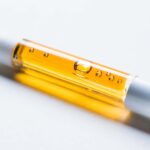In this study, 100% of participants in the peanut oral immunotherapy group tolerated 9,043 mg of peanut product after treatment.
Key Findings on Store-Bought Peanut Oral Immunotherapy (POIT)
- High Success Rate for Desensitization – 100% of children in the POIT group tolerated a full serving size of peanut (9,043 mg) in an oral food challenge, compared to only 10% of the avoidance group.
- Sustained Tolerance Even After Avoidance – 86.7% of the POIT group maintained tolerance after 16 weeks of ad-libitum ingestion and 8 weeks of peanut avoidance, versus only 8.6% in the avoidance group.
- Safe and Cost-Effective Approach – Using store-bought, home-measured peanut products was both inexpensive and safe when administered under allergist supervision.
For children with high threshold peanut allergy, oral immunotherapy using store-bought and home-measured peanut products provided significantly higher rates of desensitization compared to peanut avoiders, according to research presented at the 2025 AAAAI / WAO Joint Congress.
“Studies for treatment of peanut allergy, such as omalizumab and oral, sublingual or epicutaneous immunotherapy have typically focused on those with a low threshold of reaction, less than one peanut. Our study uniquely addressed those with a higher threshold, representing about half of those with a peanut allergy and conveniently used store-bought, home-measured peanut. We were excited to see incredibly high success rates of participants tolerating a serving size of peanut, even after a period without daily dosing. The approach was safe and very inexpensive and could be applied to select patients with careful allergist supervision,” said lead author Scott H. Sicherer, MD, FAAAAI, of the Jaffe Food Allergy Institute at the Icahn School of Medicine at Mount Sinai in New York where the study was conducted.
Approved peanut allergy therapeutics typically address patients with low allergen thresholds, but nearly half of people with peanut allergies have higher thresholds and may be easily treatable, according to research. In this phase 2 trial, participants ranging from age 4 to 14 years old, reacting to cumulative peanut doses of 443-5043 mg, were randomized into an avoidance group and a peanut oral immunotherapy (POIT) group to evaluate respondence to an approximately 3400 mg maintenance dose of store-purchased, home-measured peanut products. During the study, 73 participants fulfilled the entry criteria and 38 were randomized to the POIT. Afterwards, in an oral challenge (OFC), participants were given up to 9,043 mg of peanut protein. For those on POIT tolerating 9,043 mg, researchers undertook another OFC for sustained unresponsiveness (SU) that was determined after 16 weeks of ad-libitum ingestion before 8 weeks of peanut avoidance.
The research, funded by the NIAID, showed 100% success for peanut desensitization in the POIT group compared to only 21.0% for the peanut avoidance group. The results also found that 100% of the group treated with POIT tolerated 9,043 mg in the oral food challenge while only 10% of the avoidance group tolerated the same amount. Additionally, 86.7% of the POIT group continued to tolerate 9,043 mg on sustained unresponsiveness evaluation and by intention-to-treat, and 68.4% on POIT achieved sustained unresponsiveness/natural tolerance of 9,043 mg compared to 8.6% who continued avoiding.









